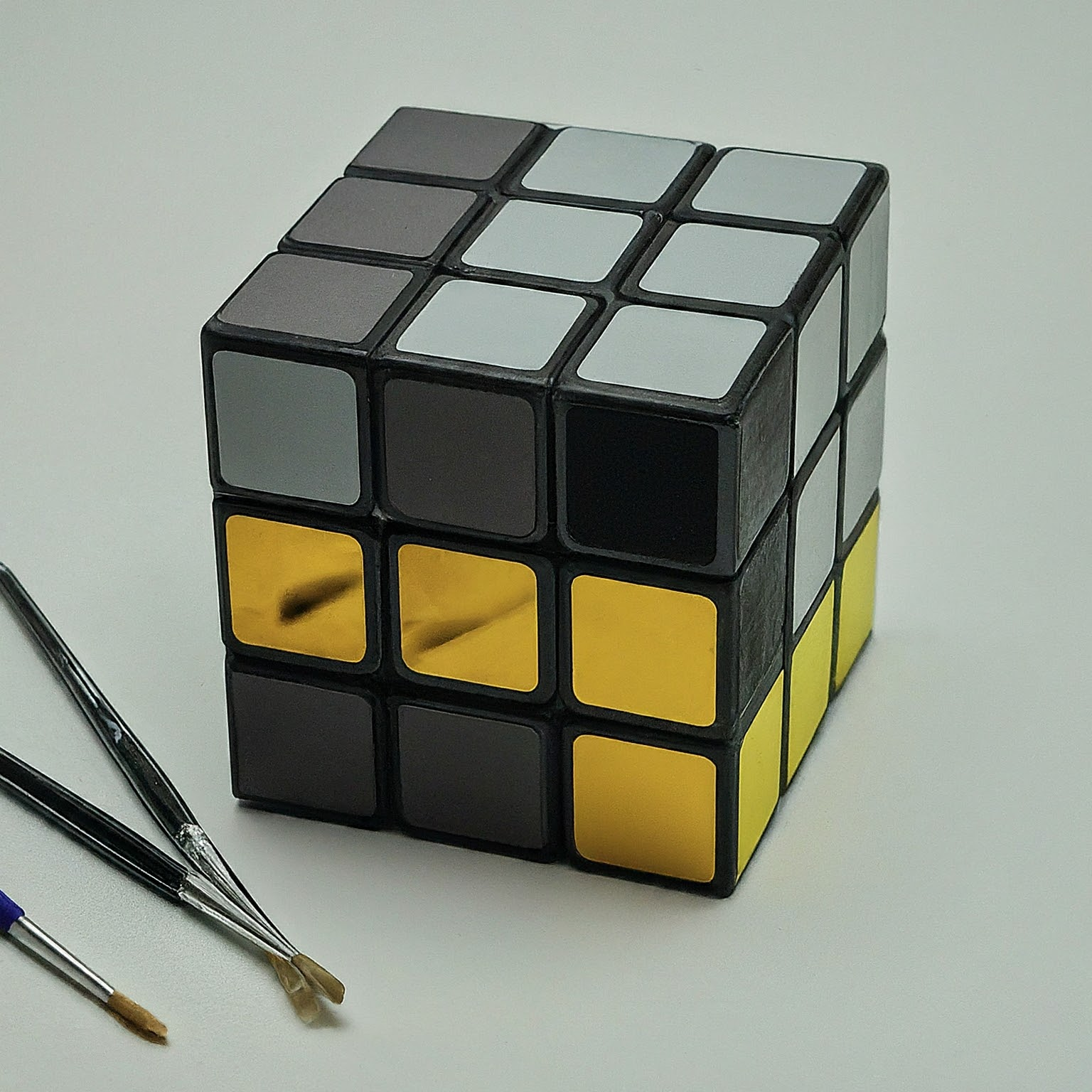Machine learning allows computers to learn from data without explicit programming. This capability extends to the field of computer vision, where machines are trained to “see” and interpret the visual world. Want to delve deeper into the fascinating world of computer vision and how machines are trained to “see”? Explore Cyber Bee’s blog post,“How Does Computer Vision Work? Unveiling the Magic Behind Machines that See”.
As Teaching Assistants (TAs) guiding students in machine learning, understanding overfitting and underfitting is essential. These concepts significantly impact the behavior of machine learning algorithms on unseen data. This guide provides a clear breakdown of these challenges, equipping you to effectively explain them to your students.
We’ll delve into the technical aspects of overfitting and underfitting in machine learning, exploring their impact on model behavior and how to identify them. Additionally, we’ll equip you with various machine learning techniques to address overfitting, empowering you to guide your students towards building robust and generalizable models.
This guide aims to provide a comprehensive understanding of these critical concepts, ensuring TAs have the necessary tools to navigate the intricacies of machine learning and support their students’ success.
Understanding Overfitting in Machine Learning

One of the key challenges encountered in machine learning is overfitting. Imagine a Rubik’s cube with a mix of bright and dark squares, scrambled and unsolved on a black surface. Much like this jumbled puzzle, a machine learning model can become overly focused on the specific patterns it learns during training. This can lead to struggles when presented with new data that doesn’t perfectly match those patterns.
The Pitfalls of Overfitting: Training Bias vs. Generalizability
The ultimate goal of a machine learning model is to excel not just on the data it’s trained on, but also on unseen data it encounters in the real world. This ability to generalize effectively separates a powerful model from a mediocre one. Overfitting, however, throws a wrench into this process.
Imagine a model being trained to identify different types of flowers based on pictures. During learning, the machine learning model might become so adept at recognizing the specific flowers in the training dataset that it achieves near-perfect accuracy. However, when presented with a completely new flower it hasn’t seen before, it might misclassify it entirely. This is because the model has become overly focused on memorizing the training data’s specifics, including potential quirks or random noise, rather than learning the underlying patterns that define different flower types.
This phenomenon is often referred to as overfitting caused by biased training data. The model performs exceptionally well on the data it’s been trained on, but this success comes at the cost of sacrificing its ability to generalize to unseen data.
Overfitting Explained: Excessive Focus on Training Data
Overfitting arises from a model’s misplaced emphasis on memorizing the training data’s intricacies. Let’s unpack this concept further:
- Training Landscape: Imagine the training data as a complex landscape with hills and valleys representing the relationships between input features and the target variable. The model, acting as an explorer, traverses this landscape, aiming to learn a map that accurately reflects these relationships.
- Model Complexity: The model’s complexity acts like its metaphorical eyesight. A simple model with few parameters might struggle to discern the finer details of the landscape, leading to underfitting. Conversely, a highly complex model with many parameters resembles an explorer with exceptional vision, capable of capturing intricate features.
However, when overfitting occurs, the model takes a wrong turn. Instead of focusing on uncovering the generalizable patterns that define the landscape, it becomes fixated on memorizing the specific bumps and dips encountered in the training data. This includes capturing random noise or irrelevant details, which are essentially mirages in our analogy. This excessive focus on the specifics of the learning data hinders the model’s ability to recognize these same patterns when presented in a slightly different form on out-of-sample data.
By understanding how overfitting occurs and how it arises from an overemphasis on the training dataset, we can move on to identifying its signs and exploring techniques to prevent it.
Understanding Underfitting in Machine Learning

In contrast to overfitting, underfitting occurs when a machine learning model is too focused on general trends and fails to capture the nuances of the training data. Imagine a Rubik’s cube where all the sides are a single color, perfectly solved. While this cube appears neat and orderly, it lacks the complexity needed to represent the real world. Similarly, an underfitted model might perform well on very basic examples but struggle with real-world data that contains intricate patterns and variations.
The Curse of Underfitting: Failing to Capture the Underlying Patterns
Imagine training a model to predict housing prices based on square footage. An underfitting model might be overly simplistic, failing to capture the non-linear relationship between square footage and price. This results in a weak model that performs poorly on both the training data and unseen data (high bias).
Think of it like trying to navigate a vast ocean with a small rowboat. The model, lacking the necessary complexity, is unable to adapt to the intricacies of the data. It might miss crucial patterns, leading to inaccurate predictions across the board.
When a Machine Learning Model Underfits: Poor Performance Across the Board
Underfitting occurs when a model lacks the capacity to learn the underlying patterns present in the data. This can be attributed to several factors:
- Limited Model Complexity: A low-complexity model with few parameters might not have the necessary “expressive power” to capture the complexities within the data. It’s like trying to draw a detailed portrait with only a few crayons – you’ll end up with a very basic representation.
- Insufficient Training Data: If the model is trained on a limited dataset, it might not have enough examples to learn the true relationships between features and the target variable. Imagine trying to understand a new language by only hearing a few words spoken – you wouldn’t grasp the full picture.
The consequence of underfitting is a model that performs poorly on both the training data and out-of-sample data. It lacks the ability to generalize and make accurate predictions on new information.
Being aware of the restrictions caused by underfitting, we can explore strategies to increase model complexity and leverage data effectively, ultimately leading to better performing models.
Recognizing the Signs: Overfitting vs. Underfitting in Machine Learning Models

As TAs, being able to identify overfitting and underfitting is fundamental in guiding students towards optimal model performance. This section equips you with the knowledge to recognize these issues in your students’ models.
Signs of Overfitting: When Your Model Gets Too Attached to the Training Data
Overfitting models become overly reliant on the training data, sacrificing generalizability. Here are some telltale signs:
High Training Accuracy, Low Testing Accuracy
A significant disparity between the model’s performance on the training data and testing data is a red flag for overfitting. If the model achieves near-perfect accuracy on the training data but generalizes poorly on out-of-sample data, it suggests the model has memorized the specifics of the training data rather than learning the underlying patterns.
Machine Learning Model Complexity and Susceptibility to Overfitting
Models with a high number of parameters are generally more prone to overfitting. While they can capture intricate details, this very detail-oriented nature can lead to overfitting if not properly controlled.
Signs of Underfitting: When Your Model Lacks the Necessary Skills
Underfitting models fail to capture the underlying patterns within the data during the training process. Here’s how to identify them when evaluating their performance on new data:
Poor Performance on Both Training and Testing Data
If a machine learning model operates poorly on both the test data and the test data during the testing process, it’s a strong indication of underfitting. This is a common challenge faced by data scientists, and it suggests the model lacks the capacity to capture the underlying relationships within the data. This often occurs with linear models or models with limited input and output data. As a result, the model exhibits weak performance across the board, even on the data it was specifically trained on.
In simpler terms, imagine a linear model as a toolbox. If the model is too simple (has few parameters), it might be like having only a hammer in your toolbox. While a hammer is a useful tool, it can’t handle all situations. Similarly, a low-complexity model might not have the necessary hyperparameters to learn the complexities of the data. This is known as the underfitting trap.
By recognizing these signs during the testing process, you can guide your students towards diagnosing overfitting and underfitting issues. With this understanding, they can explore appropriate solutions to achieve optimal model performance.
Strategies to Combat Overfitting in Machine Learning
Building robust machine learning models hinges on effectively taming overfitting. This section equips you with various techniques to prevent overfitting during the testing process, ensuring your model excels not just on test data, but also on unseen (new) data, mimicking real-world scenarios. By implementing these techniques, you’ll empower your students to develop models with optimal performance, meaning they can accurately make predictions on new data they haven’t encountered before.
Data Augmentation: Expanding the Horizon of Possible Inputs
Imagine the training data as a compass guiding your model through the complexities of the problem. A limited compass restricts the model’s exploration, potentially leading to overfitting. Data augmentation broadens the horizon by artificially creating new training examples, exposing the model to a wider range of possible input data values. This can involve:
- Rotations, flips, and scaling of images in computer vision tasks, allowing the model to recognize objects from various angles and scales.
- Introducing synonyms or paraphrases in natural language processing tasks, ensuring the model understands the meaning even if phrased differently.
- Adding small amounts of noisy data to simulate real-world data variability, mimicking the imperfections and inconsistencies the model might encounter in practice.
By enriching the training data with these variations, the model encounters a wider spectrum of scenarios, reducing its reliance on memorizing specific details from the limited training set. This fosters generalizability, enabling the model to perform well on new data with potentially different input data values.
Regularization Techniques: Penalizing Overly Complex Models

Regularization techniques act like a personal trainer for your machine learning model during the training process. Just like an over-muscled athlete might struggle with agility, a complex model can become prone to overfitting on the training dataset. These techniques are a vital tool for data scientists, as they prevent this by introducing penalties that discourage the model from becoming overly complex.
By adding a penalty term to the model’s cost function during training, L1 and L2 regularization techniques prevent the model from assigning very large weights to its parameters. This effectively promotes simpler models that are less likely to overfit on new data, contributing to better generalizability.
- L1 regularization: Introduces sparsity by driving some parameters to zero, essentially removing them from the model and reducing its complexity. This can lead to better generalization on new data.
- L2 regularization: Shrinks the magnitude of all parameters, promoting a smoother and less complex model. This helps prevent the model from memorizing specific patterns in the training dataset that might not hold true for unseen test data.
Exploring Additional Regularization Techniques
While L1 and L2 regularization are powerful tools, their effectiveness can be amplified by incorporating other techniques:
- Data Normalization: Imagine training data with features measured on different scales (e.g., temperature in Celsius vs. weight in kilograms). Normalization evens the playing field for all features. No longer can features with larger values dominate how the model learns. This ensures a fairer evaluation of each feature’s contribution and ultimately contributes to better generalizability on new data.
- Dimensionality Reduction: Sometimes, datasets contain a large number of features (data points). This can introduce complexity and potentially lead to overfitting. Dimensionality reduction techniques, like Principal Component Analysis (PCA), can help address this by reducing the number of features the model needs to learn from. By focusing on the most important features that capture the representative variations in the data, PCA helps to prevent overfitting and improve the model’s generalizability to new data.
By incorporating these techniques alongside L1 and L2 regularization, you introduce a bias towards simpler models. This not only reduces overfitting but also promotes better generalizability, allowing your models to perform well on data they haven’t encountered during training. Remember, the key is to find the right balance between model complexity and generalizability for optimal performance on unseen data.
Balance is Key: The Rubik’s Cube Analogy

Imagine a Rubik’s cube. A cube with all blank sides represents a limited training dataset. Data augmentation techniques act like tools that “paint” additional patterns and colors onto the blank sides, enriching the data with variations. Rotations and flips are like viewing the cube from different angles, synonyms add different color combinations representing the same solved state, and noisy data introduces slight imperfections. By enriching the cube with various patterns, the model encounters a wider range of possibilities.
However, a Rubik’s cube with an excessive number of intricate colors and patterns represents a highly complex model prone to overfitting. L1 and L2 regularization techniques are like simplification tools that remove or reduce the number of colors and patterns on the cube. This promotes a simpler model that can still be solved efficiently on new, unseen cubes with potentially different color combinations (new data).
The goal is to create a Rubik’s cube with a rich variety of patterns (data augmentation) but also maintain a structure that is not too complex (regularization techniques). This balance allows the model to excel on both the test data and new data, mimicking real-world scenarios where a model needs to adapt to variations it hasn’t encountered before.
Remember: Just like a Rubik’s cube that’s both visually interesting and solvable, the key is to find the right balance between data richness and model manageability for optimal generalizability in the real world.
Controlling Model Complexity: Dropout and Early Stopping
Beyond manipulating the training data and the model itself, a machine learning technique can directly control the model’s complexity:
- Dropout: Randomly Disabling Neurons to Prevent Overfitting: In neural networks, dropout randomly deactivates a certain percentage of neurons during training. This forces the network to learn redundant representations and prevents overfitting to specific training data patterns.
- Early Stopping: Knowing When to Stop Training to Avoid Overfitting: Overtraining a model can lead to overfitting. Early stopping prevents overfitting by halting training when the model’s performance on a validation set starts to decline. If the model’s performance on the validation set starts to decline, training phase is stopped to prevent overfitting on the training data.
By combining data augmentation, regularization techniques, and controlling model complexity, you equip your students with a powerful arsenal to combat overfitting. This empowers them to build models that excel not just on the data points they train on, but also on unseen data, mimicking real-world scenarios.
Conclusion: Finding the Sweet Spot for Machine Learning Models

Throughout this guide, we’ve explored the challenges of overfitting and underfitting in machine learning. We’ve armed you with the knowledge to detect overfitting and counteract it. But the journey doesn’t end here.
The Importance of Generalizability: Balancing Model Complexity and Performance
The top priority in machine learning is to build a machine learning algorithm that excels not only on its test data but also on unseen data. This ability to make accurate predictions on new information separates a powerful algorithm from a mediocre one.
Finding the sweet spot between model complexity and generalizability is an art form. Overly simple machine learning algorithms might underfit, while overly complex ones risk overfitting. The key lies in striking a balance that allows the algorithm to capture the underlying patterns in the data without becoming fixated on the specifics of the training set.
Finding the Sweet Spot: The Art of Building Robust Machine Learning Models
As TAs, you play an important role in guiding students towards building these reliable machine learning models. By effectively explaining the concepts of overfitting and underfitting, and equipping them with the tools to diagnose and address these issues, you empower them to:
- Select appropriate model architectures based on the problem and data complexity.
- Leverage data augmentation techniques to enrich the training data.
- Apply regularization methods to control model complexity.
- Utilize techniques like dropout and early stopping to prevent overfitting.
- Continuously evaluate generalizability on unseen data to ensure generalizability.
Through this combined approach, students can build a model that excel not just on the training data, but in the real world, making accurate predictions on new and unseen information.
Remember, the battle against overfitting and underfitting is an ongoing challenge. Experimentation, exploration of different techniques, and a deep knowledge of the data are all essential for achieving the optimal balance of generalizability in machine learning models.
Now that we’ve explored the importance of achieving the right balance between generalizability and overfitting/underfitting, navigating these challenges requires expertise. For a deeper dive into how Cyber Bee’s machine learning development services can help you avoid these common pitfalls, visit our blog post on “Machine Learning Development Services: https://cyberbee.dev/blog/machine-learning-development-company/“.



